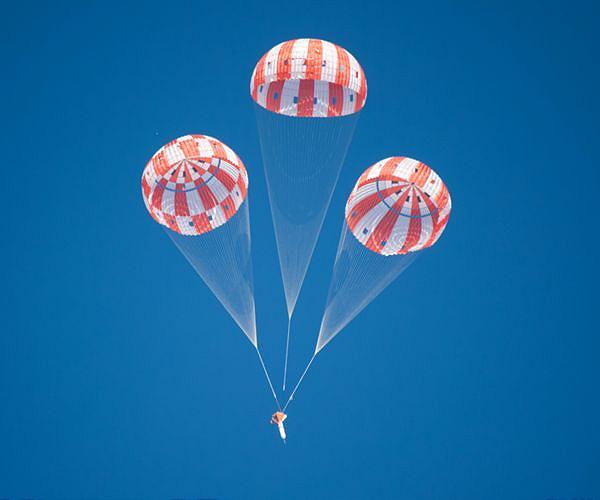
Artemis I landing spot abandoned over weather; mission remains on schedule (Image Credit: Space Daily)
Unsuitable weather is forcing NASA to abandon its primary landing site for the Orion spacecraft, although the mission otherwise remains on schedule, officials confirmed at a Thursday afternoon briefing.
“At present, we are on track to have a fully successful mission with some bonus objectives that we’ve achieved upon the way,” Artemis I Mission Manager Mike Sarafin told reporters from Johnson Space Center in Houston.
“The mission continues to proceed well.”
Thursday marks day 23 of the 26-day Artemis I mission as the capsule prepares to return to Earth.
NASA will conduct final tests on Friday and Saturday, with the unmanned capsule scheduled for a trajectory burn Sunday before splashing down in the Pacific Ocean at 12:40 p.m. EST.
“On entry day we will realize our priority one objective, which is to demonstrate the vehicle lunar re-entry conditions, as well as our priority three objective, which is to retrieve the spacecraft,” said Sarafin.
“We are wrapping this mission up. We are not letting our guard down. We have dynamic flight phases and we are encouraged by the progress we have made and by the path that we are on.”
NASA officials recently chose the landing sight, taking into account a looming cold front off the California coast.
“Our landing site would normally be in the San Diego area. We also have an northern alternate site that we could have chosen, that is just north of our nominal site, Artemis 1 Flight Director Judd Frieling said Thursday.
But both of those are forecast to be a no-go due for weather constraints due to a cold front that will be moving in right around the time that we have splashdown. So, as a consequence, we have decided to move up range of this track by 300 nautical miles. So we’d be landing right of the Guadalupe Island off the coast of Baja.”
The capsule is expected to remain in the water for two hours as NASA recovery crews complete a bevy of further tests. Those crews left from San Diego on Wednesday and are at sea to await the capsule’s splashdown.
NASA officials also need to inspect how the intense heat from reentry affects the Orion capsule’s interior.
“We’re very excited here on Sunday, but we still have the top Artemis I mission priority ahead of us, as well as demonstrating the recovery of the [Orion] capsule,” Orion vehicle integration manager Jim Geffre said.
The unmanned Artemis I mission was launched Nov. 16 from Kennedy Space Center in Florida an the early stage of NASA’s quest to return astronauts to the moon.
Orion had been in a distant retrograde orbit — an elliptical orbit around the moon that is unique to Artemis 1 to test its various systems.
The mission paves the way for the future manned Artemis II and Artemis III flights.
The Artemis II flight test is to be its first crewed mission that will transport four astronauts around the moon, with Artemis III to see the first woman land on the lunar surface.
Related Links
Mars News and Information at MarsDaily.com
Lunar Dreams and more
|
|
Tweet |
|
|
|
We need your help. The SpaceDaily news network continues to grow but revenues have never been harder to maintain. With the rise of Ad Blockers, and Facebook – our traditional revenue sources via quality network advertising continues to decline. And unlike so many other news sites, we don’t have a paywall – with those annoying usernames and passwords. Our news coverage takes time and effort to publish 365 days a year. If you find our news sites informative and useful then please consider becoming a regular supporter or for now make a one off contribution. |
||
|
SpaceDaily Contributor $5 Billed Once credit card or paypal |
SpaceDaily Monthly Supporter $5 Billed Monthly paypal only |
|
NASA’s Orion spaceship slingshots around Moon, heads for home
Washington (AFP) Dec 6, 2022
NASA’s Orion spaceship made a close pass of the Moon and used a gravity assist to whip itself back towards Earth on Monday, marking the start of the return journey for the Artemis-1 mission.
At its nearest point, the uncrewed capsule flew less than 80 miles (130 kilometers) from the surface, testing maneuvers that will be used during later Artemis missions that return humans to the rocky celestial body.
Communication with the capsule was interrupted for 30 minutes when it was behind the far side … read more








